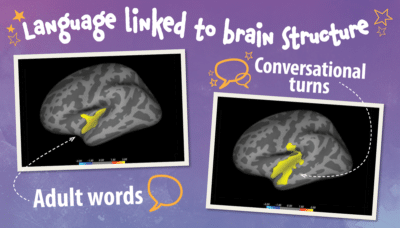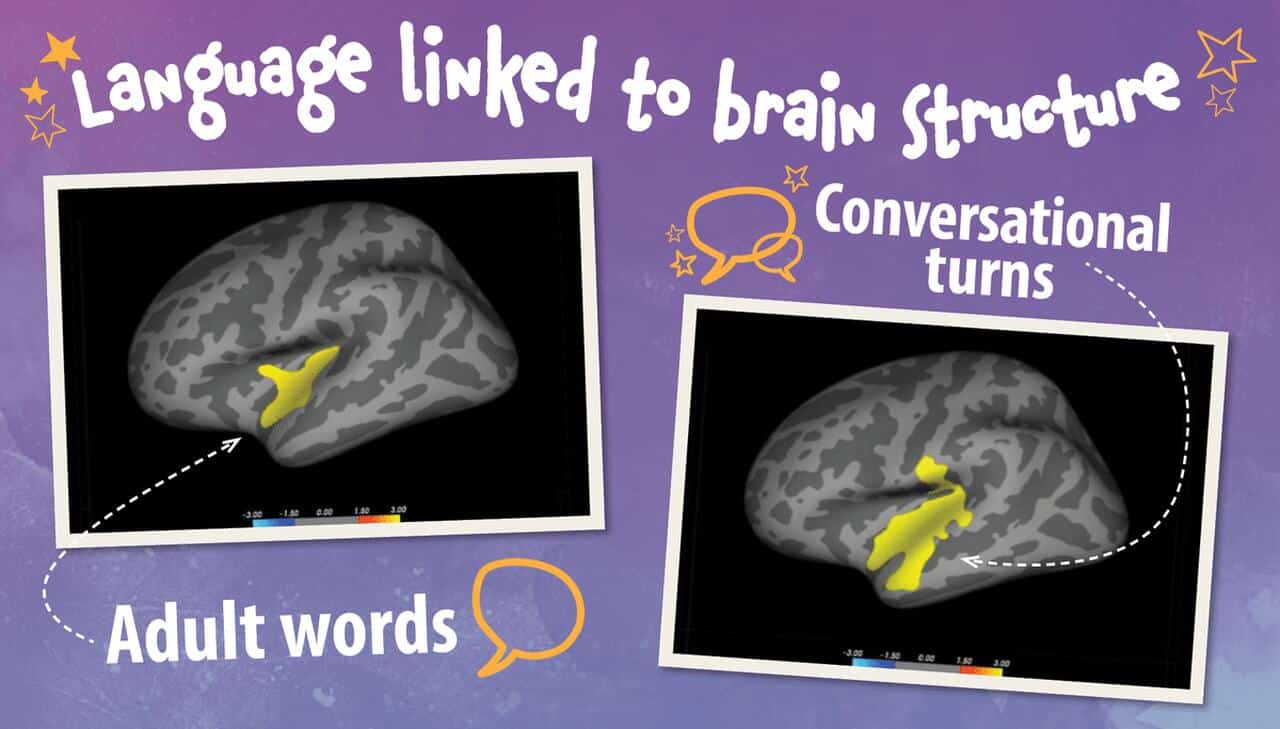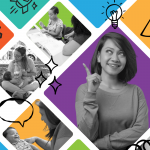A new study from Teachers College, Columbia University exploring associations between family socioeconomic background, children’s brain structure, and children’s reading skills indicates that children who experience more conversational turns may have increased brain growth, and in turn, better reading skills.

The researchers found that children who were talked with more frequently at home had more gray matter in the surface area of the left perisylvian cortex, an area of the brain associated with language production and comprehension.
The team’s statistical analyses indicate that the perisylvian cortex mediates the relationship between parental education and child reading skills, meaning that the findings could suggest a new neural mechanism for how a family’s socioeconomic status affects their child’s brain development.
The study, titled “Socioeconomic Disparities in Language Input are Associated with Children’s Language-Related Brain Structure and Reading Skills” builds upon previous research that suggests conversational turns may have unique brain-building power by linking them with white matter connectivity, brain function, and long-term outcomes. [quote]
“Interestingly, the effect was not driven by child vocalizations, suggesting it’s not just chattier kids who have a larger cortex. Rather, the findings are consistent with parent-child talk shaping brain development, not the other way around,” author Kimberly G. Noble explained on Twitter.
To collect data for the study, the team used LENA technology to capture information on children’s home language environments, magnetic resonance imaging (MRI) to look at their brain structure, and standardized tests to understand their reading ability. Participants ranged in age from 5 to 9 and came from a diverse range of socioeconomic backgrounds in the New York City area. While adult words and conversational turns both affected brain growth, the effect size was 15 percent higher for conversational turns, confirming that quality is more important than quantity when talking with children.
Learn more about the research on the brain-building power of conversational turns in a webinar featuring two scientists.
“These results suggest that improving children’s language exposure via prevention and intervention programs may benefit their structural brain development,” the study concludes. “Here, we show for the first time that children who experience more conversations with adults or adult speech have patterns of cortical structure in language-supporting regions that are linked with greater reading proficiency. These findings reinforce the importance of programs and policies supporting parents in providing high-quality language experiences to their children.”




